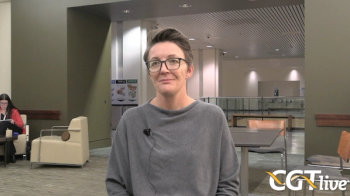
Study Aims to Gain Insights into Genetics of Glaucoma
The study is aiming to gain insight into glaucoma in African American populations.
This content originally appeared on our sister site,
Investigators at the Scheie Eye Institute at University of Pennsylvania in Philadelphia are conducting the Primary Open-Angle African Ancestry
The study, led by Joan O’Brien, MD, director of the institute, chairman of the Department of Ophthalmology, and the Nina C. Mackall Research Professor of Ophthalmology at Penn Medicine, is a population-based, cross-sectional, case-control study.
To date, more than 10,000 African American patients have been recruited to participate in the study.
This is important because glaucoma is particularly devastating to affected African Americans, and most of the research in glaucoma has included Caucasian patients.
The data show that African Americans are 5 times more likely than Caucasians to develop glaucoma and that the disease develops up to 10 years earlier in African American patients.
READ MORE:
The POAAGG study focused on investigating primary open-angle glaucoma (POAG) for clues in the patients’ DNA that might help predict their risk of developing glaucoma as well as possibly provide the potential to cut the disease off with application of gene therapies before it has the chance to develop.
Because information from Caucasian and Asian patients may not apply to African Americans, limiting the study to African Americans should provide valuable genetic insights.
Focus on community
Amassing that number of African American patients willing to donate DNA was no small feat, considering their apprehension based on their previous experiences, such as the infamous US Public Health Service Tuskegee Syphilis Study, use of DNA without individuals’ consent, and potential racial targeting by police.
The investigators, many of whom are Black and have family members affected by glaucoma, reached out to community leaders to disseminate information about the study to Philadelphia residents and gain their trust through a multimedia campaign to raise glaucoma awareness and undergo glaucoma screening.
A radio station ultimately was recognized as having informed approximately 75% of residents who participated in the study.
In addition, the National Institutes of Health provided $11 million in funding for the 5-year study to advance the cause.
Screening was carried out in churches and community centers, and a van canvassed the neighborhoods to encourage people to participate.
When screening identified glaucoma or patients at risk for the disease, eye care was provided at the Scheie Eye Institute despite the absence of health care.
The institute provided patients with transportation and lunch vouchers to overcome barriers to participation.
This experience led the investigators to develop a blueprint for successful recruitment strategies that they published to serve as guidelines for underserved populations.
The study enrollment was completed in 2019; it included identifying genes with mutations that might increase the risk of damage to the optic nerve, which could result in potential gene therapies that can supply an edited copy of the gene and possibly ease the medication burden, the investigators noted.
Ahmara Ross, MD, an assistant professor of ophthalmology at Scheie Eye Institute, explained that many genes already identified as being involved in glaucoma are not the causes in African American patients, a finding that emphasizes the importance of identifying the culprits in the Black community that can lead to targeted therapy.
“A lot of the genes that we know about in glaucoma don’t represent my population,” Ross said. “I want to make sure that they are brought to the forefront and that, when we are coming up with these targeted therapies, it is targeted against their disease.”
The investigators also recently identified specific genetic mutations associated with characteristics of POAG, such as intraocular pressure and nerve thickness.2-4
O’Brien pointed out these findings may suggest that POAG might be an umbrella for a few different diseases with distinct genetic drivers.
--
Joan M. O’Brien
E: [email protected]
O’Brien has no financial interest in any aspect of this report.
--
REFERENCES
1. Khachatryan N, Pistilli M, Maguire MG, et al. Primary Open-Angle African American Glaucoma Genetics (POAAGG) study: gender and risk of POAG in African Americans. PLoS One. 2019;14(8):e0218804. doi:10.1371/journal.pone.0218804
2. Meer, E, Qin VL, Gudiseva HV, et al. LMX1B locus associated with low-risk baseline glaucomatous features in the POAAGG study. Genes (Basel). 2021;12(8):1252. doi:10.3390/genes12081252
3. Addis V, Chan L, Chen J, et al. Evaluation of the cirrus high-definition OCT normative database probability codes in a Black American population. Ophthalmol Glaucoma. Published online May 23, 2021. doi:10.1016/j.ogla.2021.05.002
4. Cole BS, Gudiseva HV, Pistilli M, et al. The role of genetic ancestry as a risk factor for primary open-angle glaucoma in African Americans. Invest Ophthalmol Vis Sci. 2021;62(2):28. doi:10.1167/iovs.62.2.28
Newsletter
Stay at the forefront of cutting-edge science with CGT—your direct line to expert insights, breakthrough data, and real-time coverage of the latest advancements in cell and gene therapy.










































